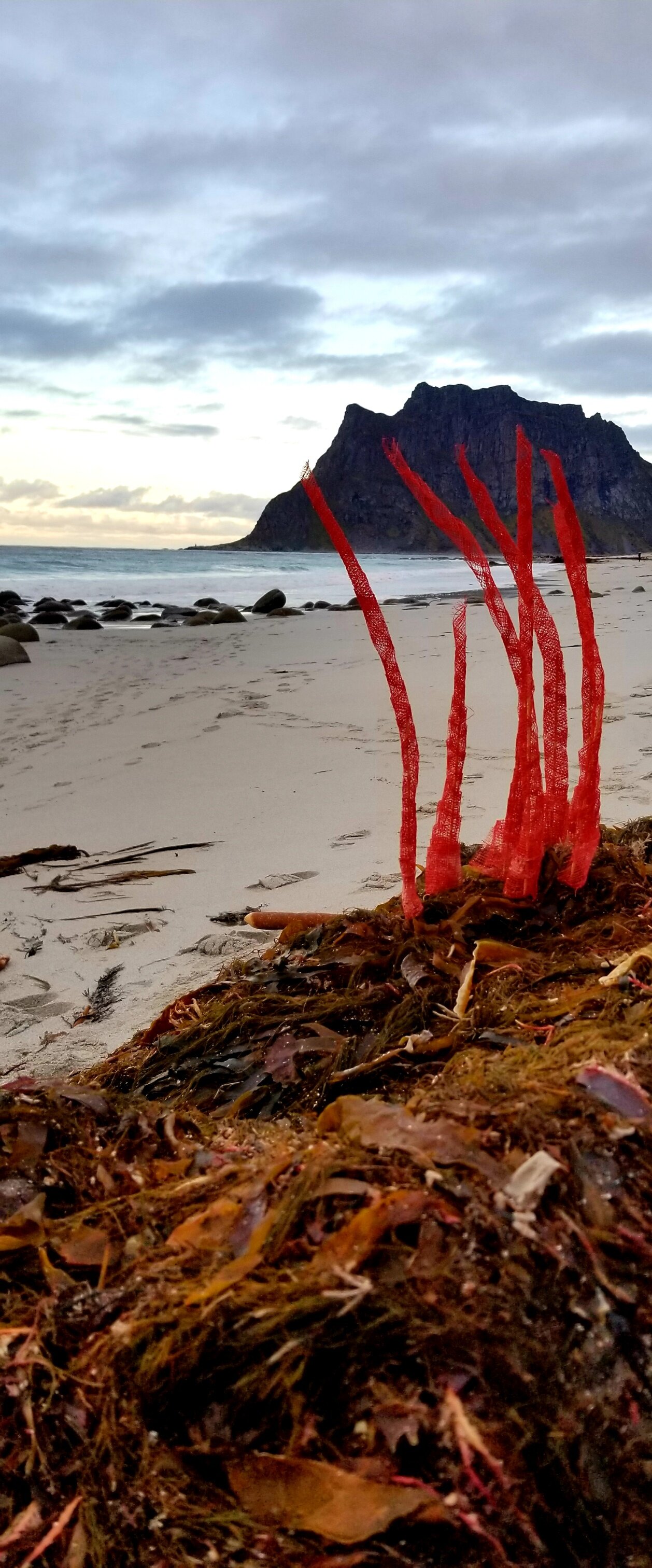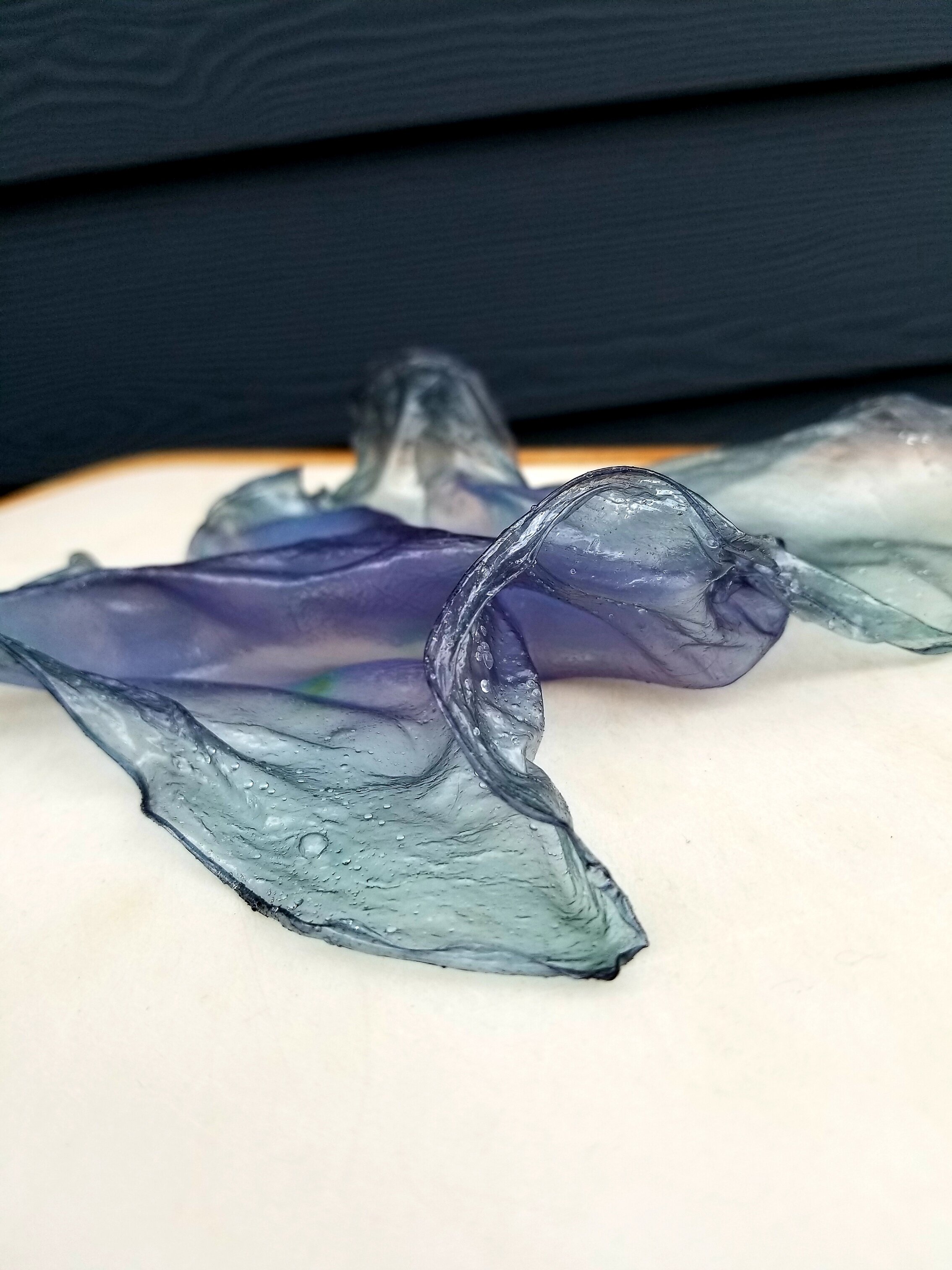Empirical data
Growing up in the 70s, the Earth had four oceans and our solar system had nine planets.
Somewhere along the way, Pluto was downgraded to a dwarf planet while Antarctica’s icy waters became the Southern Ocean to make five. Although I have never been to Pluto, I have had the good fortune of dipping my hand into each of the 70s’ four oceans.
What I remember of the Indian Ocean was trying to keep my mouth closed as we splashed our way at high speeds out of the Maputo harbor. The grayish oil-slicked water turned to a crystal clear azure as we jumped fully clothed into its surf to swim to our sandy beach destination.
My tummy ached from all the laughing we did that day.
The crashing waves and windswept moments frozen along the Arctic Ocean have a stronger pull for me to return. From Northern Iceland to Lofoten, Norway, my polar curiosity is headed further into this frigid sea as Svalbard now beckons me north.
Abaca swirls installed on Uttakleiv Beach in Lofoten, Norway, October 2018.
Both sides of the Atlantic Ocean have provided countless memories from north to south: the rocky coves of Maine to the beaches of Ipanema in Brazil, all the way to the red sand of Angola and to the edge of the Irish Cliffs of Moher.
Everyone needs a travel buddy! Pre-installation times with Chris at the Cliffs of Moher in Ireland, March 2016.
Simply put, I love the ocean, all four of them, but the Pacific is the one I call home.
And, in the past two years of travel in pursuit of creative inspiration, the Pacific has called me home time and time again.
Piece of peace
Being born in Oregon and living much of my adult life in California and Washington, I can safely call myself a west coaster, the rugged home to one tiny slice of the Pacific.
As with the Atlantic, I have stood on the edges of the largest ocean from north to south and east to west.
However, my creative journey along this shoreline has kept me nestled on the western side of the Americas.
The memories are many, but in an effort to quietly honor the Pacific, I’d like to share my gratitude with one simple installation photo from each of six sandy destinations, as well as one lesson I’ve learned at each beautiful seascape.
Join me as we head from north to south…
Washington
I adore beach combing and will spend much of my time on the coast with my head down, fixated on the treasures in the sand. The Washington beaches are wide and hit hard by wind and rain which brings incredible gifts from the sea.
Lesson 1: The beach covered with thousands of deep blue Velella, the sailor’s jellyfish, is a rare phenomenon that I was lucky enough to stumble upon, and install within, much to my creative delight in April 2018.
Oregon
My mom instilled my love of walking along the rugged beaches of the PNW in the off-season. Hunting for agates or sand dollars on the Oregon coast filled many stormy winter holidays in my childhood. The harder the wind and rain pelted our faces, the further we walked.
Bioplastic swirls in all their translucent glory, sun-drenched on Cannon Beach, Oregon, November 2019.
Lesson 2: The sun can shine with clear blue skies even at Thanksgiving on the beach in Oregon. I could not have asked for more perfect weather to explore the translucency with the first installation of bioplastics in November 2019.
California
The further south you venture does not change the temperament of the Pacific. The beaches of California are equally as wild as those of the Northwest.
Although my daughters may don a wetsuit to surf the Central Coast, I can honestly say I have rarely, if ever, spent time frolicking in its waters.
It’s too darn cold!
Paper pulp sticks installed in black iron oxide along a vein of red ochre on Tamarack Beach in Carlsbad, CA, October 2019.
Lesson 3: Learning about earth pigments and how to spot minerals in cliffs along the watershed has enhanced my creative beach experiences immensely. The red lines of ochre running through the weathered sandstone looks amazing next to the black iron oxide glittering as magnetite in the California sand.
Thanks to you, Golden State, for making such installation dreams come true.
Maui x 2
To visit Maui is a beach bum’s dream come true, but to return unexpectedly within a year is where manifestation blooms. Blending a perfect mix of tropical and arid landscapes with warm crashing surf makes Maui the hot climate version of the wild Pacific.
Threaded orbs installed in lava rock in Makena, Maui, June 2018.
Lesson 4: From lava rock to pure white sand, finding sites for installation in Maui is always made easier with the sparkling blue seas as a backdrop no matter when you visit.
Paper pulp stack installation on driftwood at Ukumehame Beach, West Maui, April 2019.
June 2018 or April 2019 equals installation inspiration all the time!
Mexico
The west coast of Mexico has treated me to some wonderful times splashing in the waves. Similar to Hawaii, but without the wide open Pacific pounding from all sides, the water in Mexico is deliciously warm with the perfect hint of swell.
Ice shots infused with botanical dyes and stacked on dried fronds at Haramara in Sayulita, Mexico, December 2018.
Lesson 5: And from swell, I really mean sweltering, particularly in the dry tropics of Sayulita in December 2018. If you want a creative challenge, ice installation on this coastline will test your patience and your sandy limits.
Blink once, and it is gone.
Peru
If the Pacific of North America has taught me anything, she keeps true to her mission of creating stunning beauty wherever she makes landfall. Peru is no exception, and as luck would have it once again, we walked alone on some of the most beautifully wild beaches you could imagine in June 2019.
Wheat paste paper stack installation in the sands of Playa Supay in Paracas, Peru, June 2019.
Lesson 6: The plight of plastic runs deep in the Pacific, and sadly, I experienced this in spades in Peru. We picked up as much plastic as we could carry from this seemingly pristine beach that blessed me with multiple installation sites.
Safe to say, my discovery of bioplastic was bred from Peruvian sand.
From the depths
So, darlin’ Pacific, thank you...
Your vast beauty will stir at my creative soul forever, even with the magnetic pull of the Poles. And, although I have my sites in 2020 on the North Pole of the Arctic Ocean, I’m coming for you too, Southern Ocean.
We shall meet one day on the 7th continent for an installation this artist is destined to place, because let’s be honest: you are simply the wild cold cousin of the mighty Pacific.





















